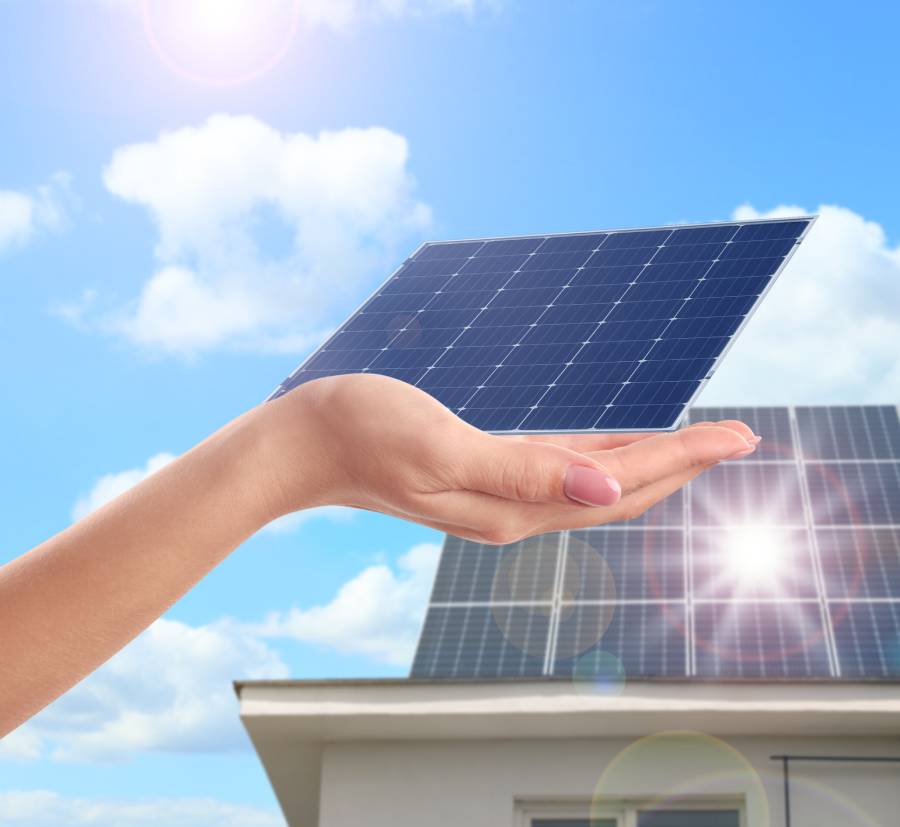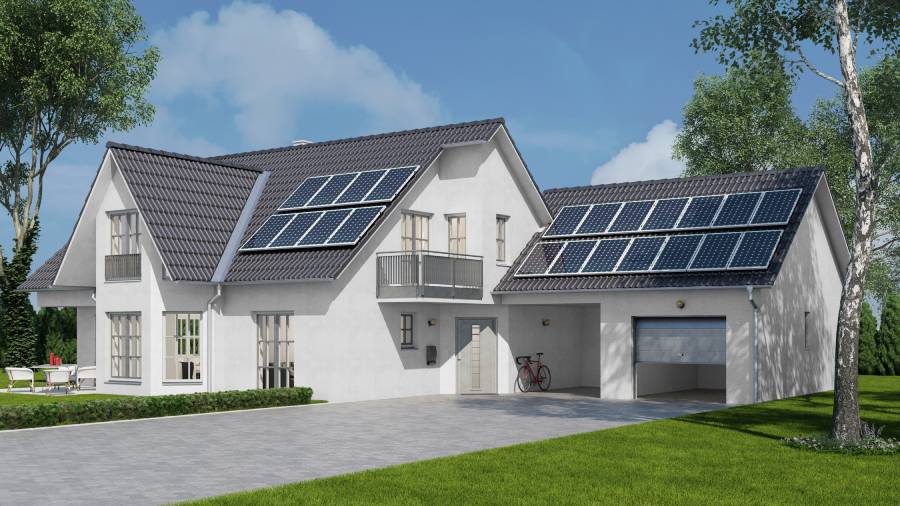A common question people ask before buying a solar energy system is “How many solar panels will it take to power my house?” It’s a valid and important question. A system that’s too small won’t be able to generate sufficient power to create the savings a homeowner seeks, and a system that’s too large will cost more than the homeowner was thinking of spending. That being said, the ideal is a system that will meet the homeowner’s current and future needs.
Determining How Many Panels You Need
There are several factors you need to take into account to determine the number of solar panels you’ll need for your home.
- Your home’s size in square feet.
- Your energy consumption in kilowatt hours (kWh).
- The amount of daily sunshine available.
- The amount of available roof space.
- The type of panel you select.
Energy Usage
You need to determine your energy usage. Take a look at your monthly and annual usage since it can vary a bit from season to season. If you have children at home, a home office, and so on, this can affect your usage numbers as well. The appliances that use the most energy in many homes are your heating system, cooling system, water heater, dehumidifier, and your refrigerator. How cool or warm you keep your home will also have an effect. In most cases, your provider can use net metering to properly size your system to meet 100% of your needs. However, this is a best-case scenario.

Let the Sun Shine In
The amount of sunshine your roof gets is determined by your latitude, time of year, tree cover, weather patterns and so on. By using various data sources, such as the U.S. State Solar Resource Map, local weather data, and other sources, your provider can determine the amount of sunshine you receive annually. This will vary from region to region. The Southwest will have more hours of sunshine per day than the Midwest or Northeast. This will also help determine the best type of panel to choose for your system.
An Imperfect Roof
The “perfect” roof for solar panels has a 30º pitch and faces due south. We should all be that lucky. Unfortunately, most roofs don’t fall into this category. Their pitch is higher or lower than 30º, they don’t face due south, they’re not an unbroken, smooth area. There may be dormers, things sticking out such as vent pipes, chimneys, and so on. Your house may have additions, areas where two roof sections meet, and a host of other architectural and structural issues. The upside is that solar panels have gotten much more efficient and can compensate for any roof “imperfections”.

Panel Size
Your typical solar panel today is around 65 inches by 39 inches. By determining your energy consumption, your provider can determine how many panels you’ll need. Depending on your roof orientation and configuration, they may have to mount panels on several areas to give you the correct number of panels.
The basic formula to determine your system size is: kWh per year/1200 = the size system you’ll need. While there are other factors to consider, this will give you a good estimate. Once the final kWh needs are determined, then your provider will decide on the number of panels based on available roof space, or land area if you want a ground mounted system, and of course, your budget. If the available space is limited, then the footprint will be small with as high efficiency as possible.
What’s Next?
What’s next? Contacting Royal Solar for a consultation. Our skilled consultants will sit down with you and discuss your solar energy needs. We’ll determine your energy needs, available space, how your roof is oriented, and all other factors that determine the size of your system. We’ll work to get you the best system to fit your budget.

